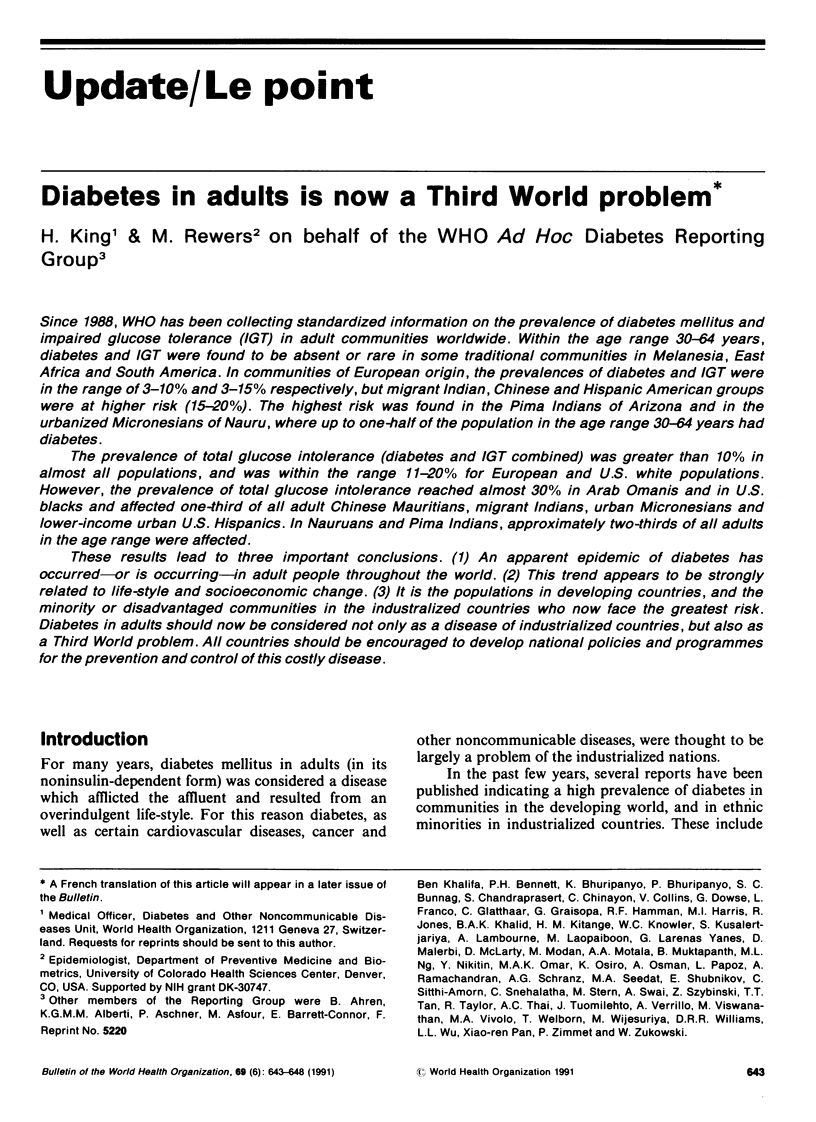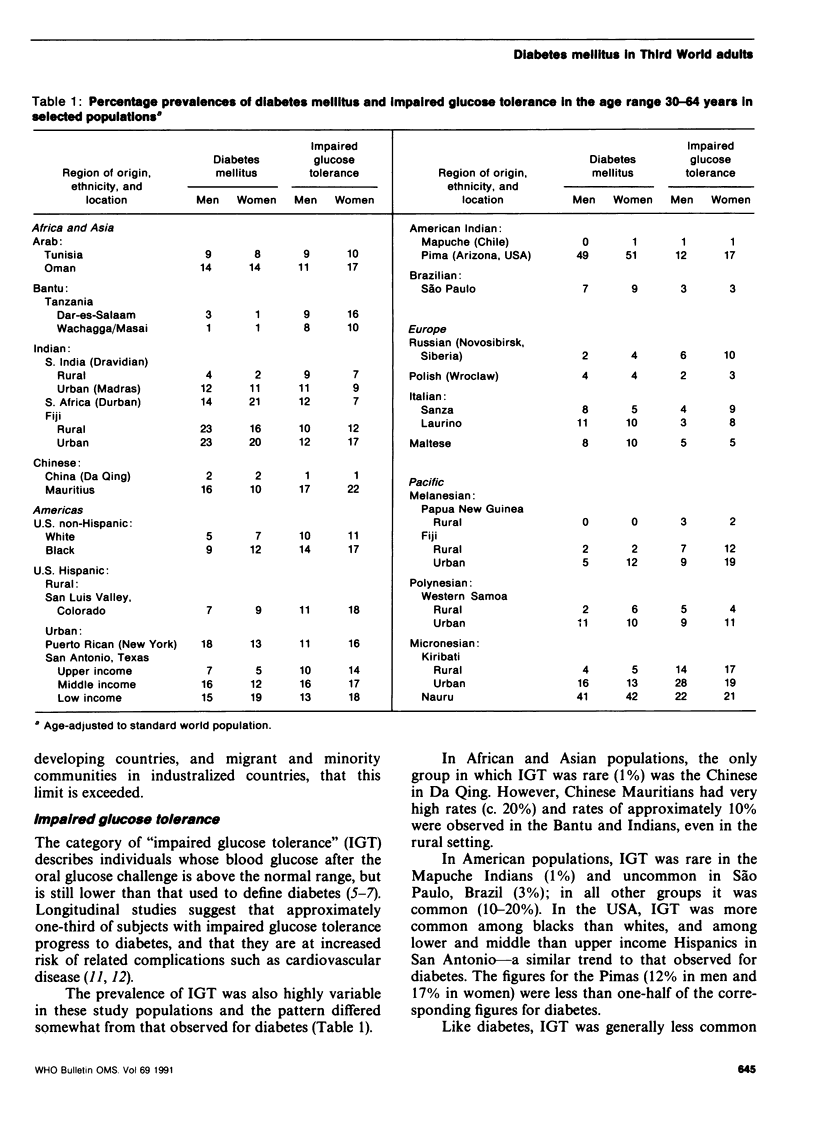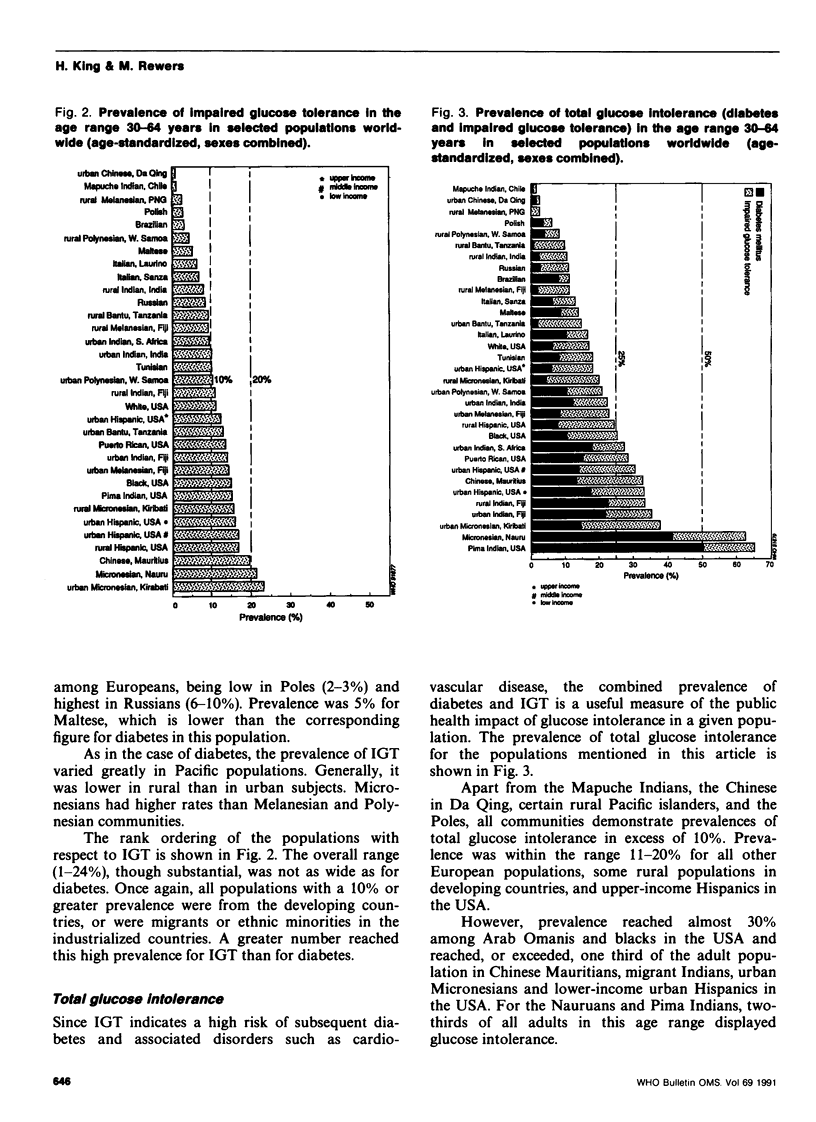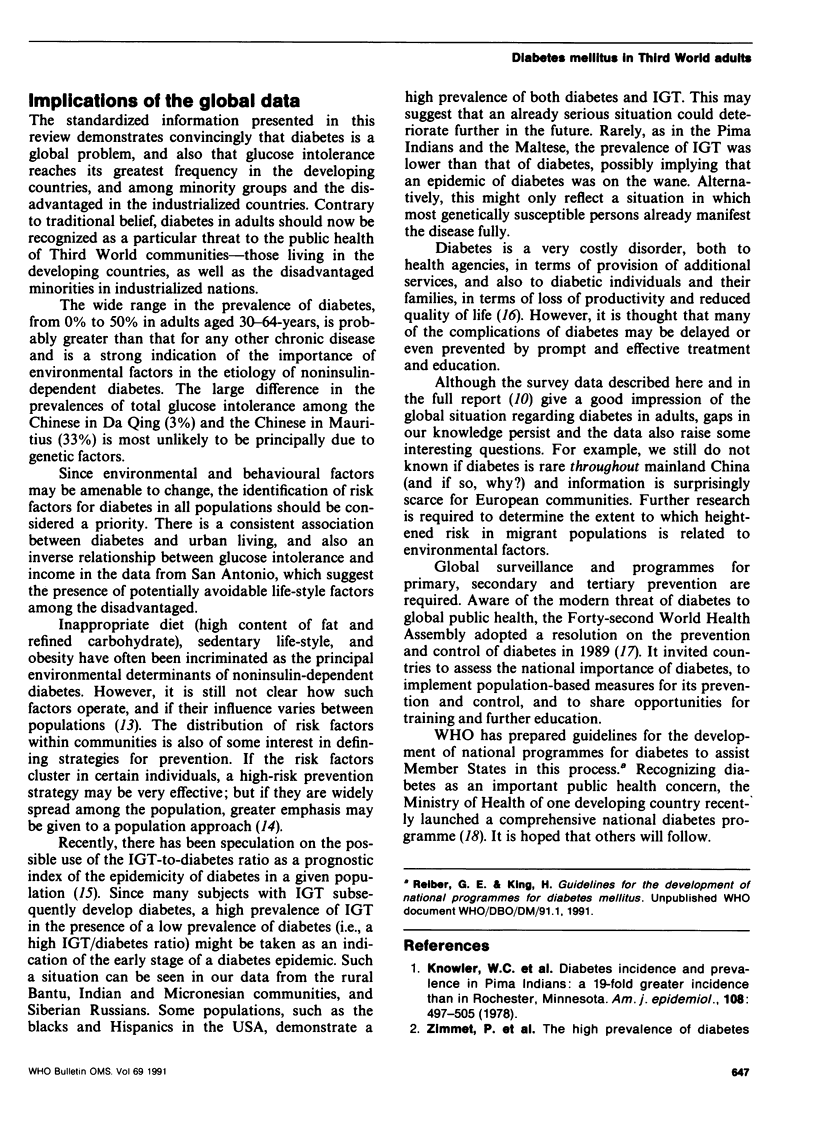Abstract
Since 1988, WHO has been collecting standardized information on the prevalence of diabetes mellitus and impaired glucose tolerance (IGT) in adult communities worldwide. Within the age range 30-64 years, diabetes and IGT were found to be absent or rare in some traditional communities in Melanesia, East Africa and South America. In communities of European origin, the prevalences of diabetes and IGT were in the range of 3-10% and 3-15% respectively, but migrant Indian, Chinese and Hispanic American groups were at higher risk (15-20%). The highest risk was found in the Pima Indians of Arizona and in the urbanized Micronesians of Nauru, where up to one-half of the population in the age range 30-64 years had diabetes. The prevalence of total glucose intolerance (diabetes and IGT combined) was greater than 10% in almost all populations, and was within the range 11-20% for European and U. S. white populations. However, the prevalence of total glucose intolerance reached almost 30% in Arab Omanis and in U. S. blacks and affected one-third of all adult Chinese Mauritians, migrant Indians, urban Micronesians and lower-income urban U. S. Hispanics. In Nauruans and Pima Indians, approximately two-thirds of all adults in the age range were affected. These results lead to three important conclusions. (1) An apparent epidemic of diabetes has occurred--or is occurring--in adult people throughout the world. (2) This trend appears to be strongly related to life-style and socioeconomic change. (3) It is the populations in developing countries, and the minority or disadvantaged communities in the industrialized countries who now face the greatest risk.(ABSTRACT TRUNCATED AT 250 WORDS)
Full text
PDF





Selected References
These references are in PubMed. This may not be the complete list of references from this article.
- Asfour M. G., Samantray S. K., Dua A., King H. Diabetes mellitus in the sultanate of Oman. Diabet Med. 1991 Jan;8(1):76–80. doi: 10.1111/j.1464-5491.1991.tb01520.x. [DOI] [PubMed] [Google Scholar]
- Dowse G. K., Gareeboo H., Zimmet P. Z., Alberti K. G., Tuomilehto J., Fareed D., Brissonnette L. G., Finch C. F. High prevalence of NIDDM and impaired glucose tolerance in Indian, Creole, and Chinese Mauritians. Mauritius Noncommunicable Disease Study Group. Diabetes. 1990 Mar;39(3):390–396. doi: 10.2337/diab.39.3.390. [DOI] [PubMed] [Google Scholar]
- Fuller J. H., Shipley M. J., Rose G., Jarrett R. J., Keen H. Coronary-heart-disease risk and impaired glucose tolerance. The Whitehall study. Lancet. 1980 Jun 28;1(8183):1373–1376. doi: 10.1016/s0140-6736(80)92651-3. [DOI] [PubMed] [Google Scholar]
- King H., Zimmet P. Trends in the prevalence and incidence of diabetes: non-insulin-dependent diabetes mellitus. World Health Stat Q. 1988;41(3-4):190–196. [PubMed] [Google Scholar]
- Knowler W. C., Bennett P. H., Hamman R. F., Miller M. Diabetes incidence and prevalence in Pima Indians: a 19-fold greater incidence than in Rochester, Minnesota. Am J Epidemiol. 1978 Dec;108(6):497–505. doi: 10.1093/oxfordjournals.aje.a112648. [DOI] [PubMed] [Google Scholar]
- Saad M. F., Knowler W. C., Pettitt D. J., Nelson R. G., Mott D. M., Bennett P. H. The natural history of impaired glucose tolerance in the Pima Indians. N Engl J Med. 1988 Dec 8;319(23):1500–1506. doi: 10.1056/NEJM198812083192302. [DOI] [PubMed] [Google Scholar]


